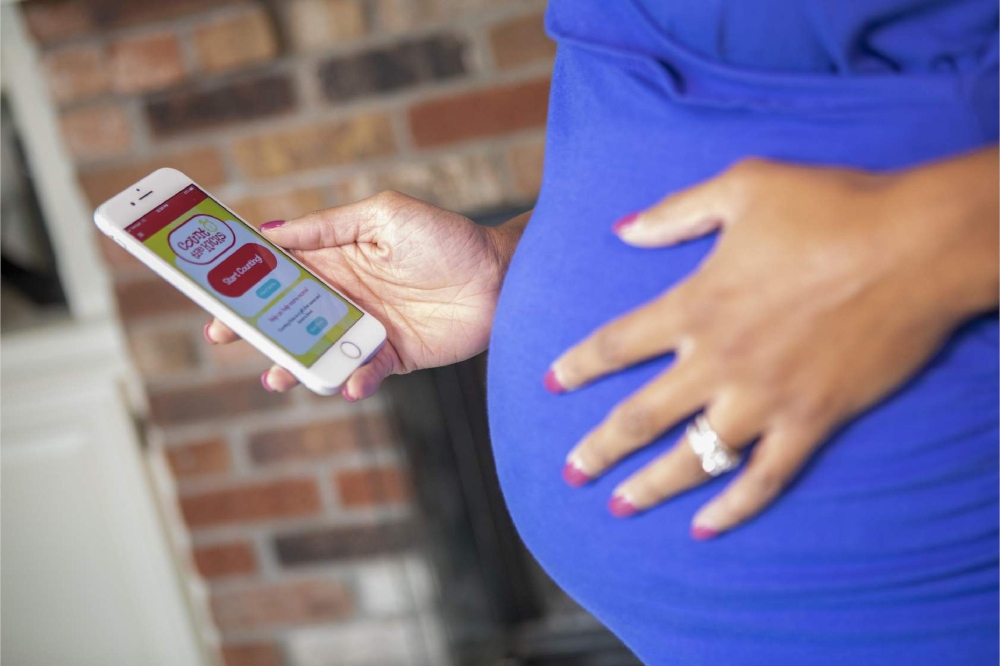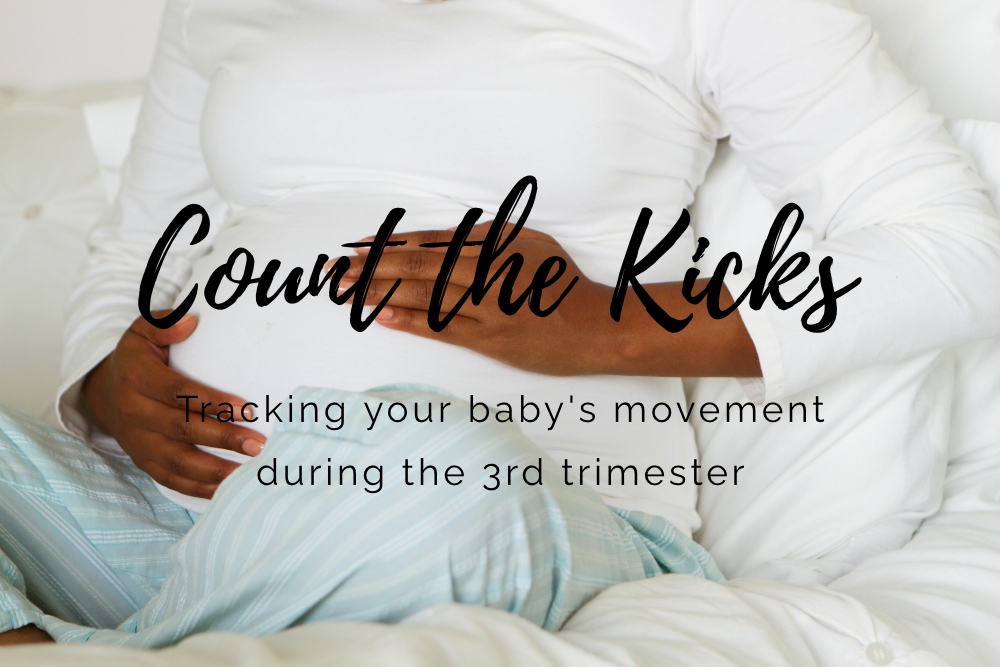Sponsored by Georgia Strong Families.
Count the Kicks: How and why it’s important to track your baby’s movements in the third trimester of pregnancy
Have you heard of Count the Kicks? It’s an evidence-based public health campaign that teaches expectant parents the method for and importance of tracking their baby’s movement in the third trimester of pregnancy. October is Pregnancy and Infant Loss Awareness Month. The Georgia Department of Public Health and Georgia Strong Families are partnering with Count the Kicks to make sure all expectant parents in Georgia are educated about the importance of kick counting in pregnancy.
About Count the Kicks
Kick counting is an easy, free, and reliable way to check on your baby’s well-being in the third trimester of pregnancy. Count the Kicks helps expectant parents get to know what’s normal for their baby by teaching them how to track their baby’s movements.
Why We Count
Research shows a change in a baby’s movements can be the earliest, and sometimes only sign that there might be an issue with a pregnancy, and is an indication that the baby should be checked by your provider. Just like when you’re not feeling well, you may want to sit around or lie in bed — a baby will also move differently. If they’re not feeling well, their movement changes, which is why it’s important to track their movement daily in the third trimester. By counting your baby’s kicks every day in the third trimester, you’ll get to know what’s normal for your baby so you can speak up and contact your provider if you notice a change.
How do I Count the Kicks?
Start by downloading the FREE Count the Kicks app or printing out a paper chart. Beginning at 28 weeks (or 26 weeks if you’re high-risk), track your baby’s movements every day, preferably around the same time. Sit with your feet up or lie on your side and count each of your baby’s movements (kicks, jabs, pokes, and rolls) as one kick. The only movements that don’t count are hiccups, as those are involuntary.
Research shows it’s also important to pay attention to the strength of a baby’s movements. After each kick counting session, the Count the Kicks app asks users to rate the strength of their baby’s movement on a scale of 1 to 5, with 1 being “fluttery” and 5 being “fierce.” If a baby’s movements become weaker, studies show this could be a sign of potential problems and expectant parents should alert their doctor.
Watch this video to learn more about how to Count the Kicks.
What is considered normal?
Every baby is different, so it’s important to get to know the average amount of time it takes your baby to get to 10 movements. You can do this by counting kicks around the same time every day. Try to pick a time when your baby is normally active, and after a few days you’ll begin to see an average amount of time it takes your baby to move 10 times.
When should I contact my provider?
If you notice a change in the strength of your baby’s movements or how long it takes your baby to get to 10 movements, you should contact your provider right away or go directly to the hospital.
What are the benefits of kick counting?
Counting kicks is a great way to bond with your baby, even for partners and siblings! It’s also a great way to get to know your baby’s personality. Count the Kicks app users report that using the app regularly helped them feel less anxious and more bonded with their baby.

When to Speak Up
During your prenatal appointments, be sure to ask your provider how to contact them if you have concerns and when you should go directly to the hospital. If your provider doesn’t talk to you about kick counting, it doesn’t mean it’s not important. It’s OK to bring up Count the Kicks with your provider and ask to show them your kick counting data. You can even download your data from the app to share directly with your provider.
Stillbirth in Georgia
Stillbirth is defined as the loss of a pregnancy after 20 weeks gestation, and according to the CDC, each year 23,500 babies are born still in the U.S. That means 1 in every 169 pregnancies ends in stillbirth, making it 10 times more common than SIDS. According to the CDC, a Black woman is more than twice as likely to lose her baby to stillbirth (1 in 96 pregnancies) than her white neighbor, colleague, or friend. In the state of Georgia, 1,041 babies are born still each year.
Visit www.CountTheKicks.org to learn more.



